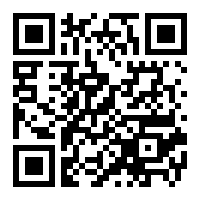Weather Determination Prediction Using Expert Fuzzy Logic Mamdani Method
(1) STIE Nagoya Indonesia, Batam, Kepulauan Riau, Indonesia
(2) STIE Nagoya Indonesia, Batam, Kepulauan Riau, Indonesia
(*) Corresponding Author
Abstract
Full Text:
PDFReferences
Ak, V. N. O. V. (2016). A Note To Interpretable Fuzzy Models, 13(7), 53–65.
Astawa, I.G.S., (2012). Penerapan Logika Fuzzy Dan Jaringan Syaraf Tiruan Pada Sistem Penilaian Berbasis Komputer, Jurnal Nasional Pendidikan Teknik Informatika (JANAPATI), Volume 1 Nomor 1, 67.
Banjarbaru, H. D. I. (2011). Penerapan Logika Fuzzy Untuk Memprediksi Cuaca, 13–19.
Djunaidi, M. (2005). Penentuan Jumlah Produksi Dengan. Jurnal Ilmiah Teknik Insudtri, 4(2), 95–104. Retrieved from
Industri, F. T., Elektro, J. T., & Petra, U. K. (n.d.). Aplikasi Kendali Fuzzy Logic untuk Pengaturan Kecepatan Motor Universal.
Kadkhoda, M., & Taheri, S. M. (2016). Mining Fuzzy Temporal Itemsets Within Various, 13(7), 67–89.
Kudrat, S. N., Sibaroni, Y., & Time, F. (n.d.). Simulasi Pengaturan Lampu Lalu Lintas Menggunakan Cellular Automata Dan Fuzzy Inference System Traffic Light Control Simulation Using.
Meimaharani, Rizkysari dan Tri Listyorini, (2014). Analisis Sistem Inference Fuzzy Sugeno Dalam Menentukan Harga Penjualan Tanah Untuk Pembangunan Minimarket, Jurnal SIMETRIS, Vol 5 No 1,90-91.
Naba, Agus. (2009). Belajar Cepat Fuzzy Logic Menggunakan MATLAB. Andi. Yogyakarta.
Puspita, E. S., & Yulianti, L. (2016). Perancangan Sistem Peramalan Cuaca Berbasis Logika Fuzzy, 12(1).
DOI: https://doi.org/10.30645/ijistech.v5i4.172
Refbacks
- There are currently no refbacks.
Jumlah Kunjungan:
Published Papers Indexed/Abstracted By:












